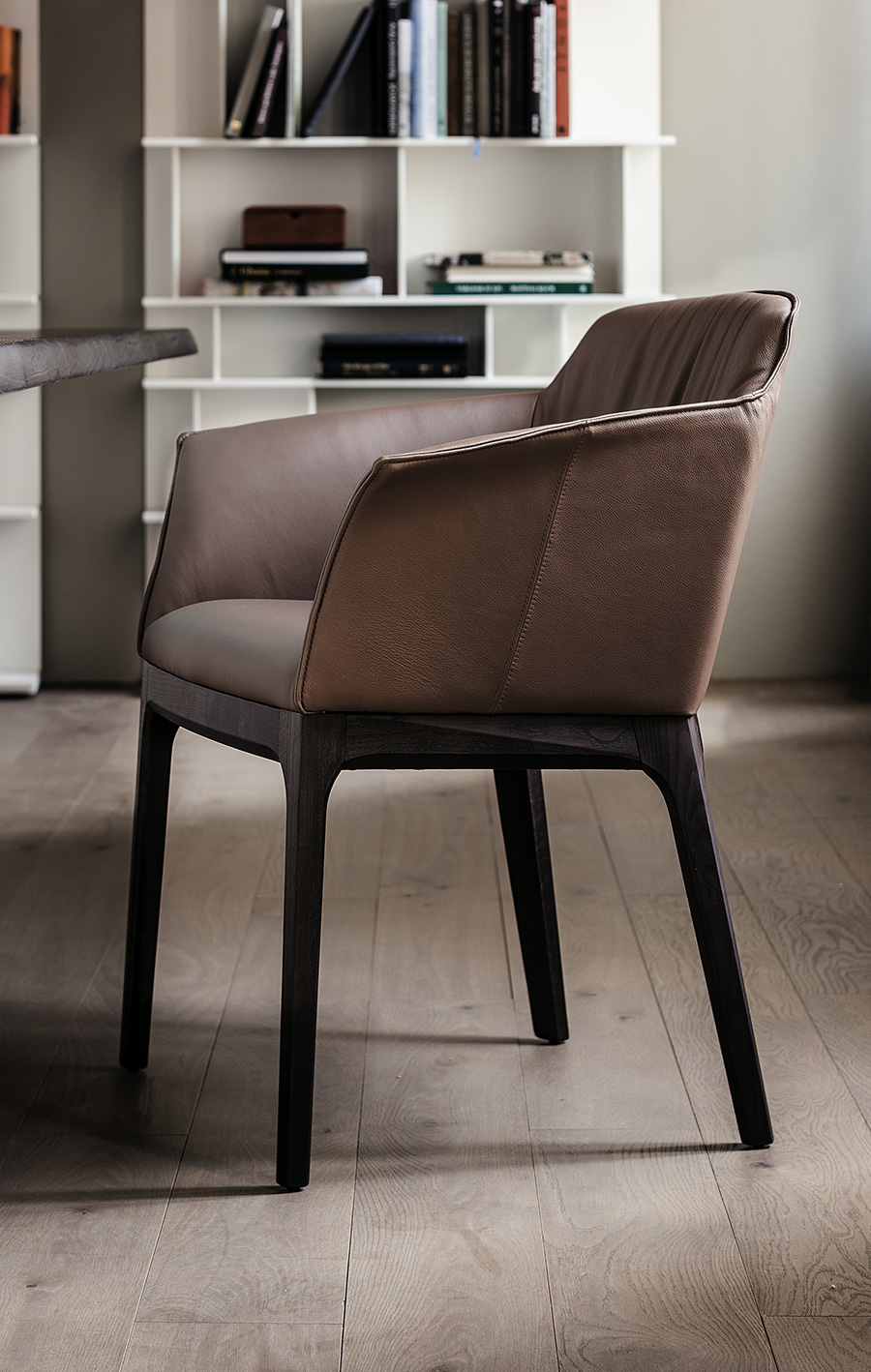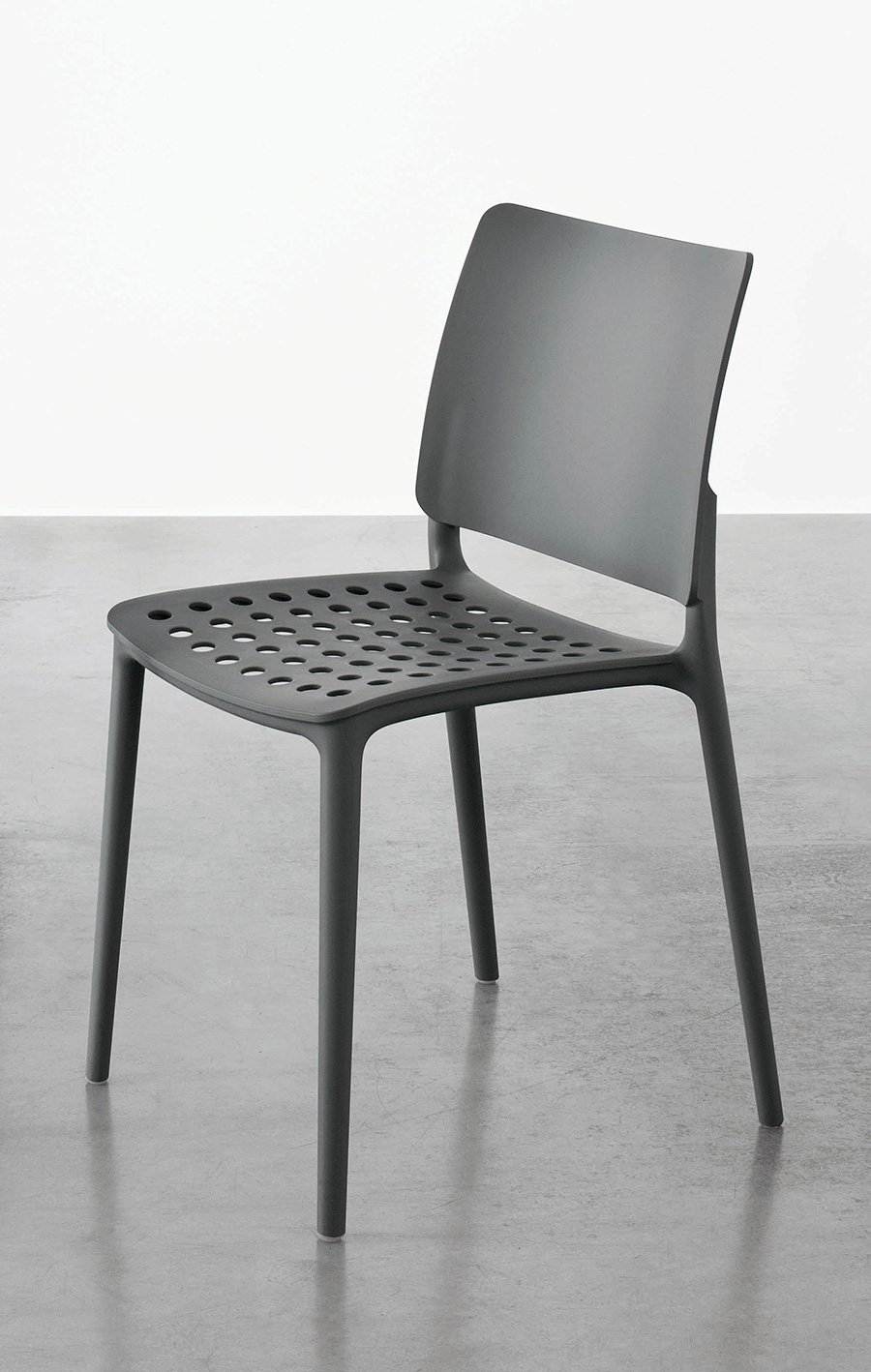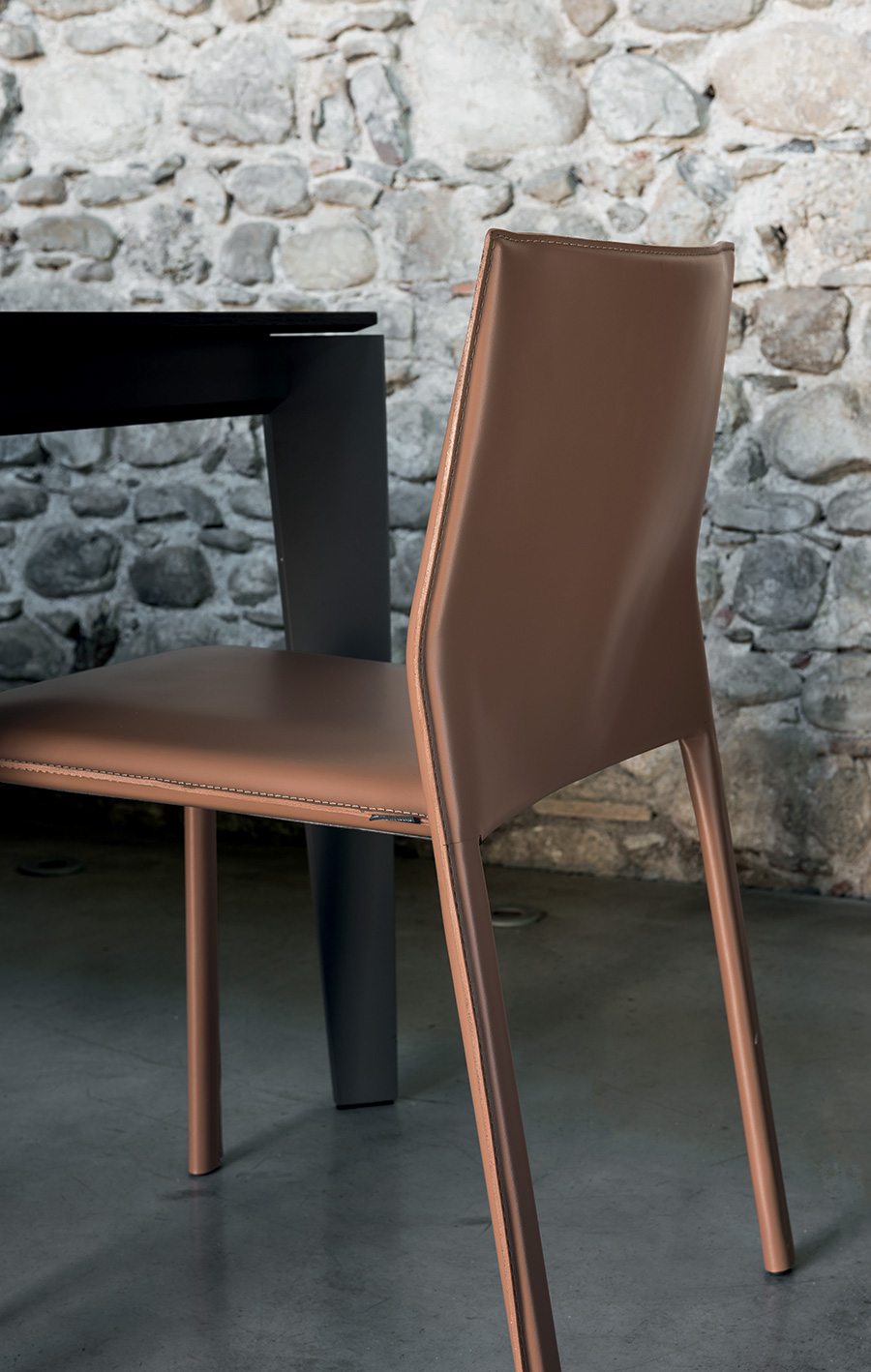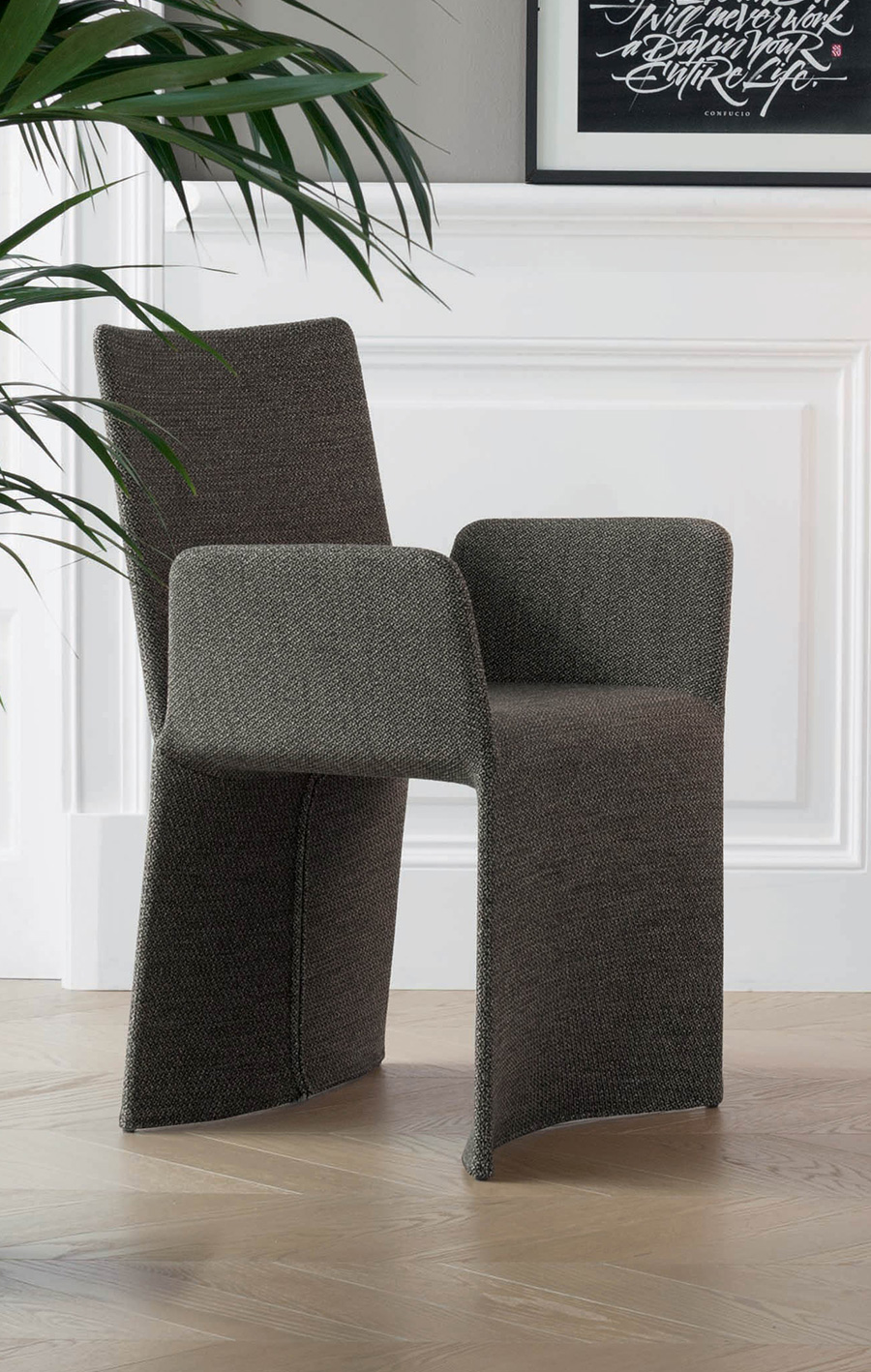What Makes a Chair Comfortable
They say that beauty is subjective: it’s true, but to a certain extent it can also be objective. The same could be said for comfort: the comfort of a seat is certainly subjective, but there are certain objective criteria for designing a chair which is, unquestionably, “comfortable”. If “that which provides wellness” is comfortable, then a chair which “provides wellness for our body” is comfortable: a well-designed chair can accommodate most people, except of course for certain independent factors relating to size.
We can say then that “by looking at a chair, we can recognise its strengths without necessarily sitting in it”.
Materials and Comfort
The first thing we can look at is the chair’s “superficial” material, i.e. what material will the user be sitting on?
Chairs in Leather, Faux-leather and Fabric normally have soft and comfortable padding: the shape of the chair may be more or less ergonomic, considering the fact that the padding will adjust to the shape of your body.
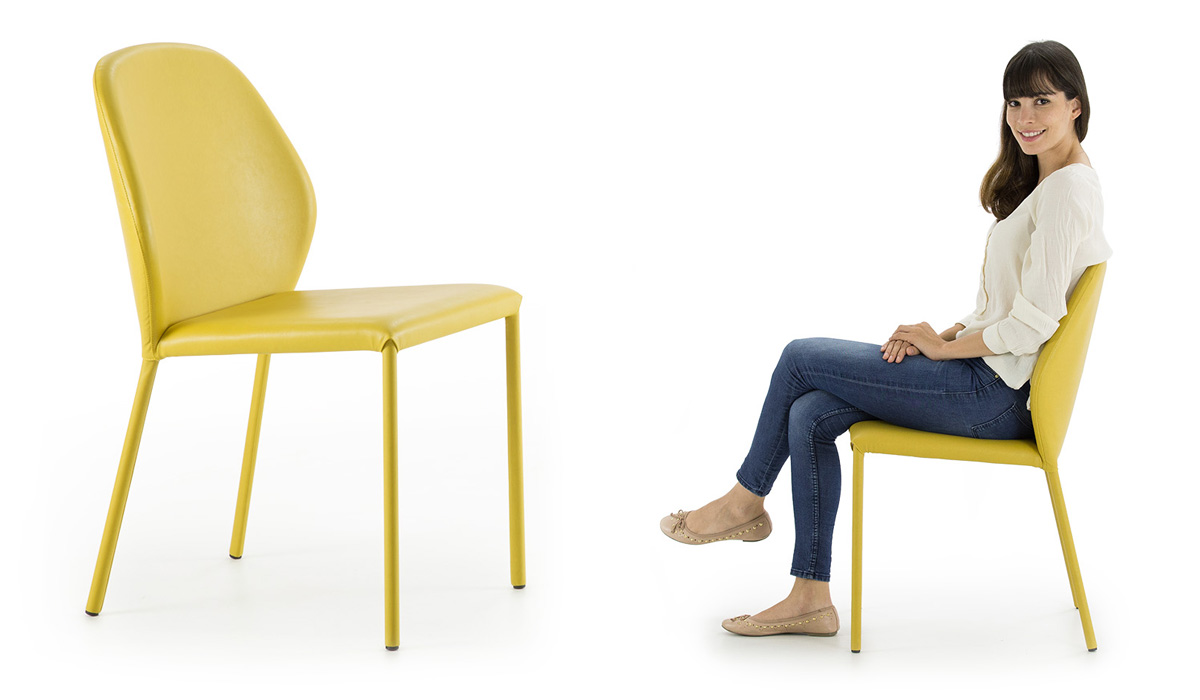
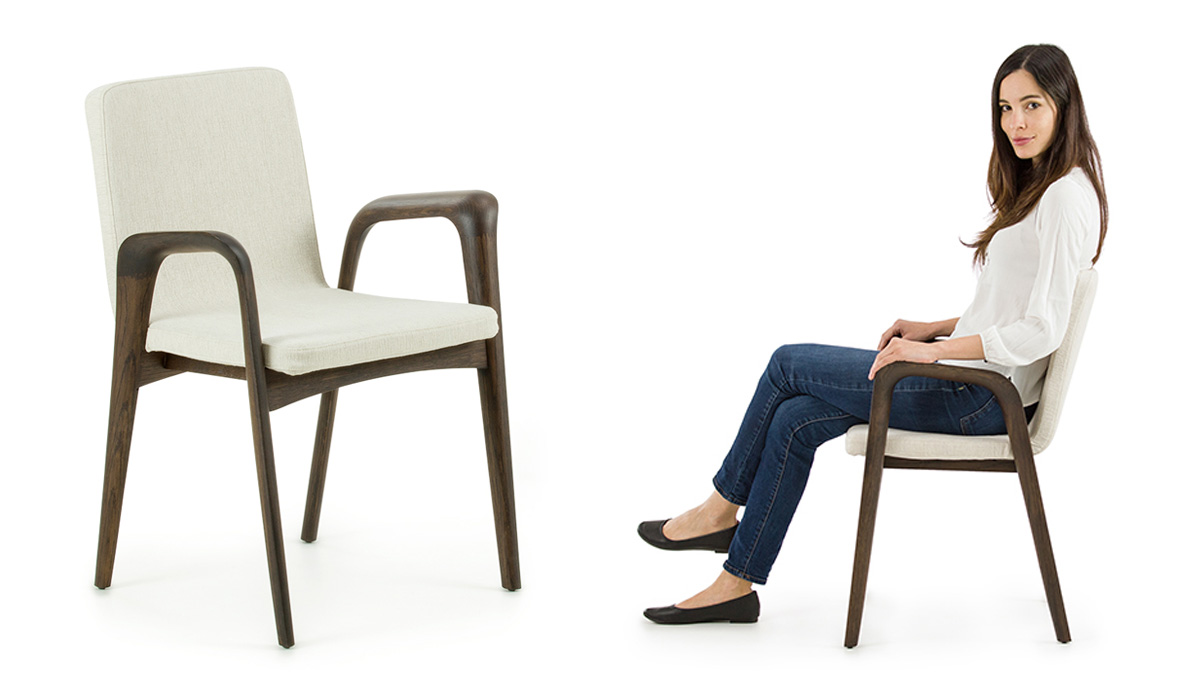
Hide-Leather Chairs or Chairs in Bonded Hide-Leather usually have more rigid padding which doesn’t adapt as easily to the shape of the body: in these cases, the design focuses more on the overall ergonomics of the structure.
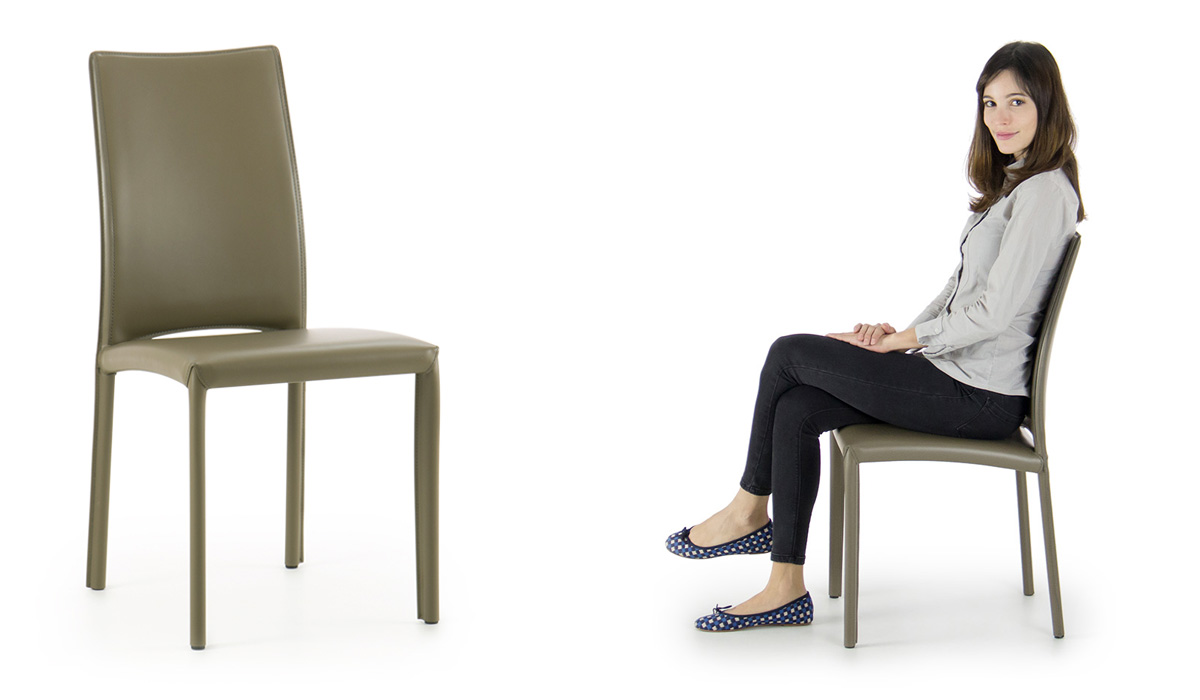
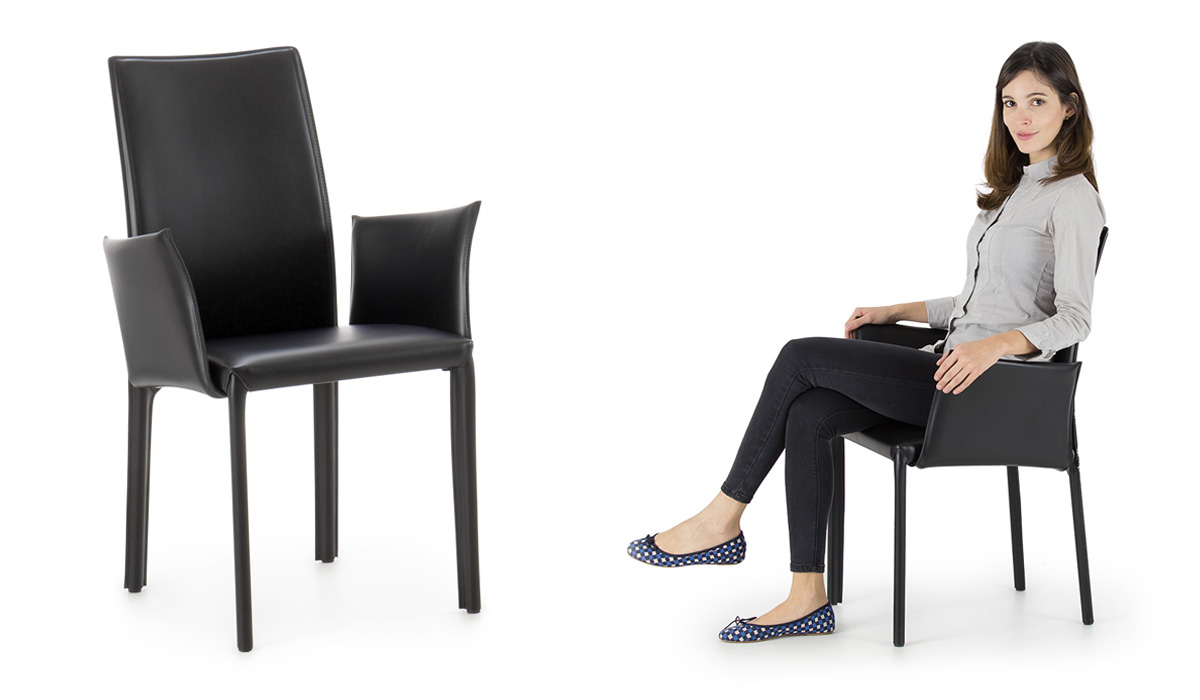
Wooden Chairs, Lacquered Chairs, Plastic Chairs or Metal Chairs, on the other hand, have a “hard” surface made of stiff materials, which are made more comfortable through designs which are focused on ergonomics. In fact, when you look at the seat and backrests on these chairs, you will usually see curves and dips in the structure, which all add to the overall comfort of the chair.
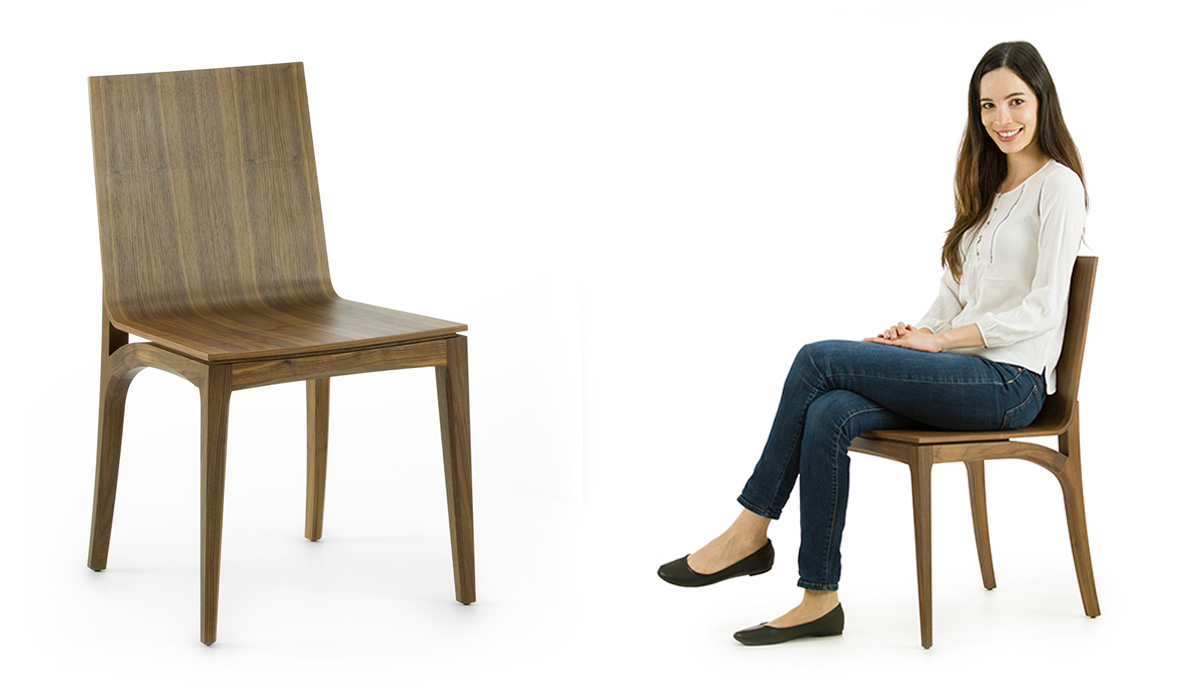
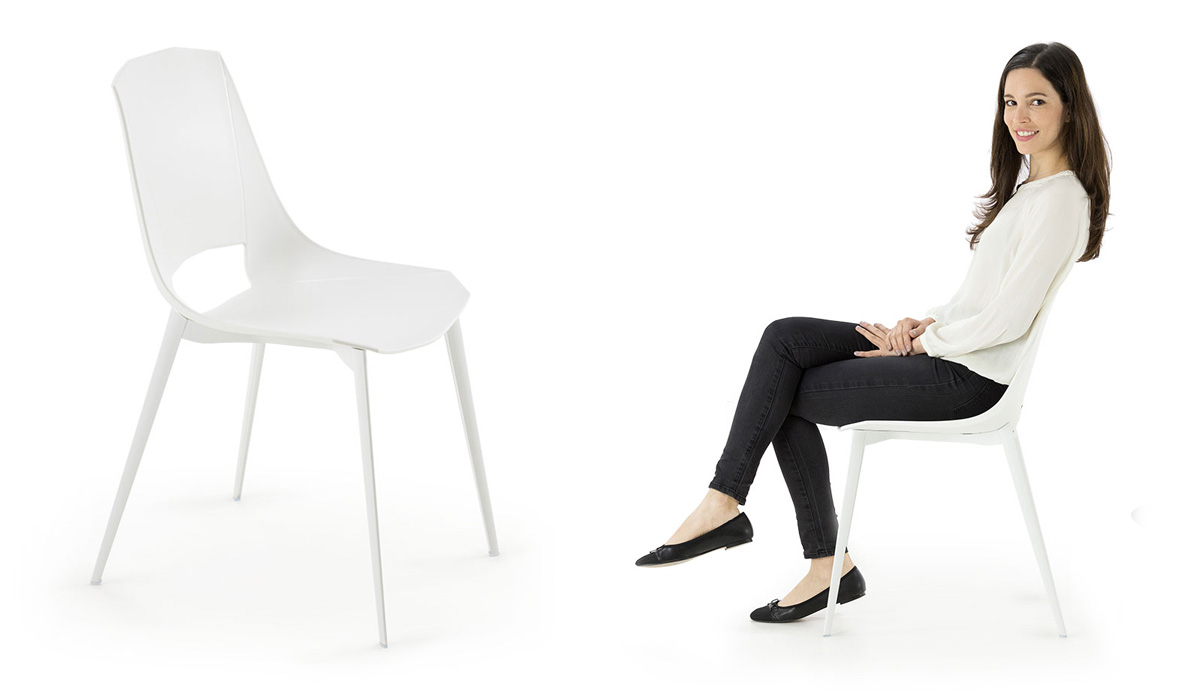
The Seat
The height of the seat of a chair is usually between 43 and 47 cm: these heights provide the correct proportions for a table which is 75-76 cm in height.
The width of the seat usually varies from 38 to 50 cm. In many cases, the seat is wider at the front than at the back, so that the chair appears lighter while still being large enough to provide comfort and support.As we were saying, the seat is often shaped in such a way as to make it more comfortable: when the front of the seat is curved, it allows you to sit forward without causing discomfort in your hamstring muscles (the lower part of your thigh); for chairs in ‘hard’ materials, there is usually a dip in the centre of the seat for ergonomic reasons; in many cases the seat is also inclined, with the taller end at the front and the lower end at the back, especially when the backrest allows you to sit back.
Some chairs have a more elastic seat, which show fluctuations with the weight of the user. This is possible with some Chairs with Sled Bases in metal which are “open” at the top: this allows them to move up and down, adding to the comfort of the chair. In other cases, however, a slightly elastic material such as hide-leather or a fabric such as texplast, can be stretched across rigid supports. This will also provide a moderate (yet effective) sense of movement and fluctuation in the seat.
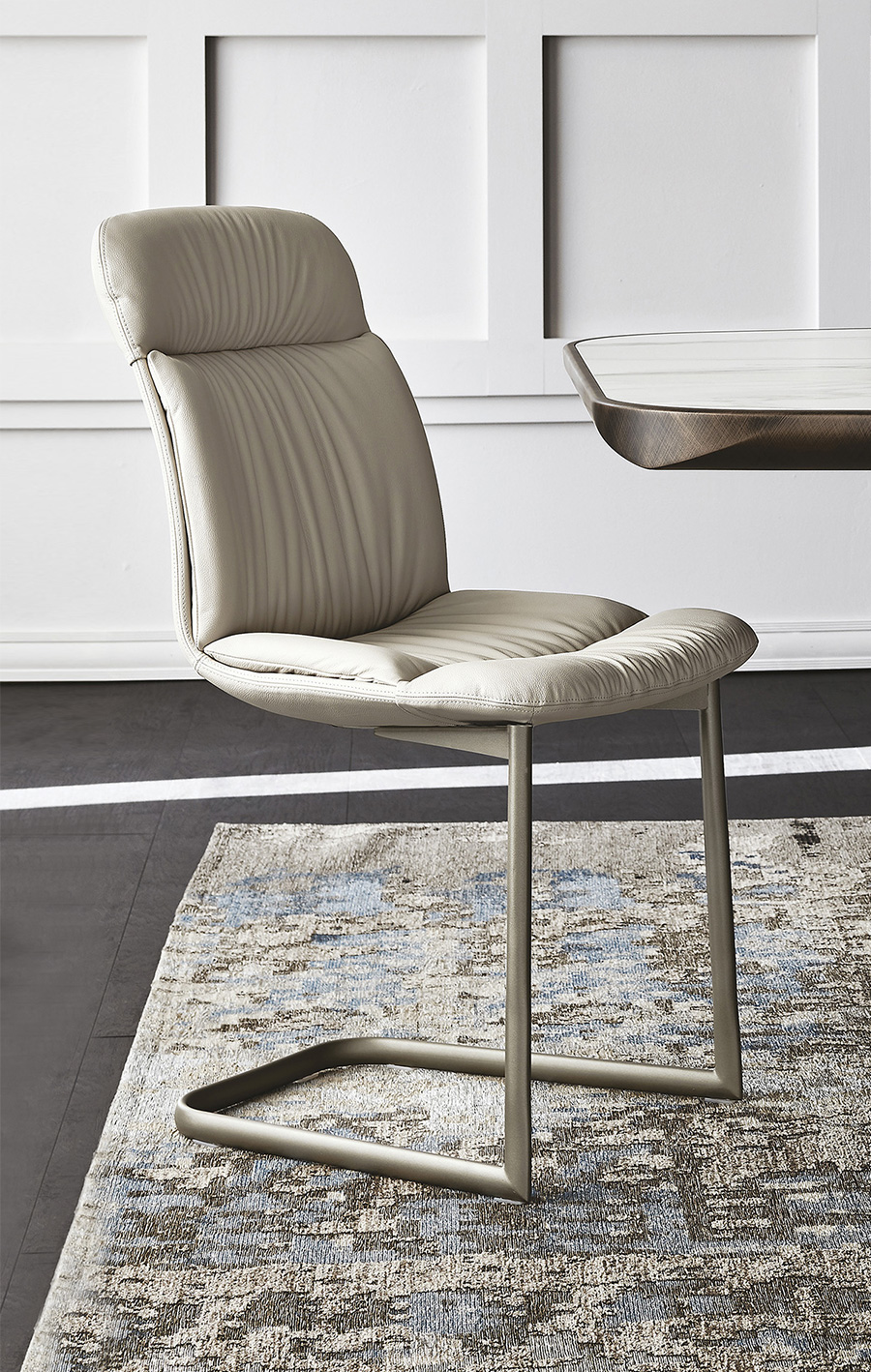
The Backrest
If the width of a backrest has a substantially aesthetic value, the height of a backrest has both aesthetic and ergonomic value.
Chairs are not intended to support the ‘cervical zone’ (neck area), as that would require a backrest which is too tall and therefore too visually impactful… however, it is absolutely essential that the backrest doesn’t “cut the back” with a height of less than 32-33 cm from the seat. This is also the case as, aesthetically, the backrests of the chairs should be taller than the table (though exactly how tall they should be is a personal choice).
Obviously the backrest can be taller than this as well, up to at least 110cm, in order to best support the spine up to the shoulder blades, or even to the shoulders; in these cases, the backrests also get slimmer, so as to appear more attractive and not to overwhelm the aesthetics of the table.
Backrests are not usually perfectly vertical, and instead they tilt ever so slightly backwards. Usually, there is also a variation in the angle of inclination about half way down the backrest, corresponding to the kidneys, so as to adapt to the natural curves of the spine.
It is a fairly common practice to have a wide backrest which is also curved, in order to best accommodate the user without negatively impacting the aesthetics.
Lastly, most backrests also benefit from their natural elasticity which has a dual purpose of providing comfort for the user, while also providing resistance for the structure itself.
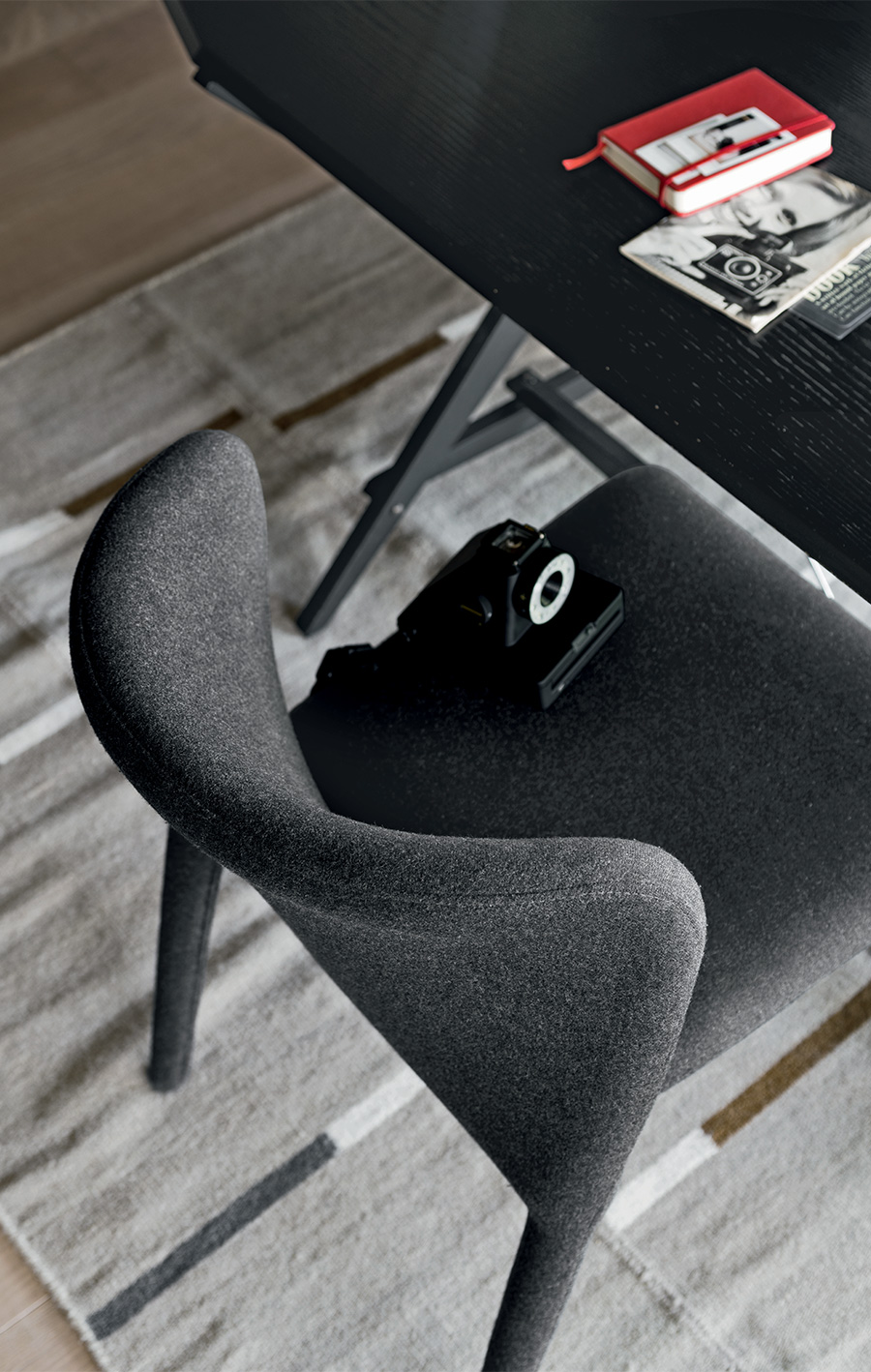
The Armrests
Chairs with Armrests are undeniably precious in aesthetic terms, and are often very comfortable as well. The armrests are normally between 15 and 23 cm from the height of the seat itself: this is a height which best supports your resting arms, and for certain tables it also allows you to push the chairs underneath, without the armrests getting in the way.
When you purchase a chair with armrests, it is important to be aware that some armrests are more decorative than functional, especially those which are integrated into a wrap-around backrest.
